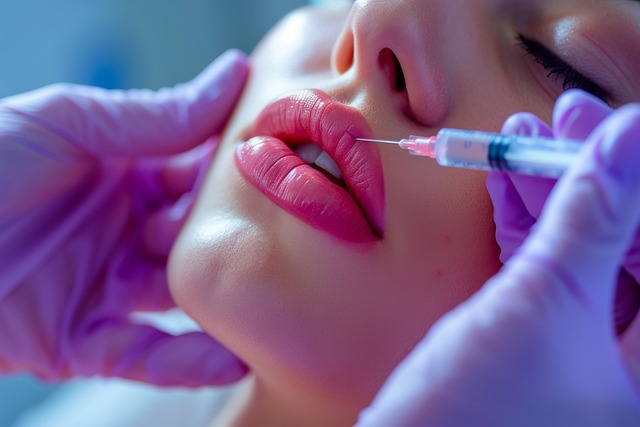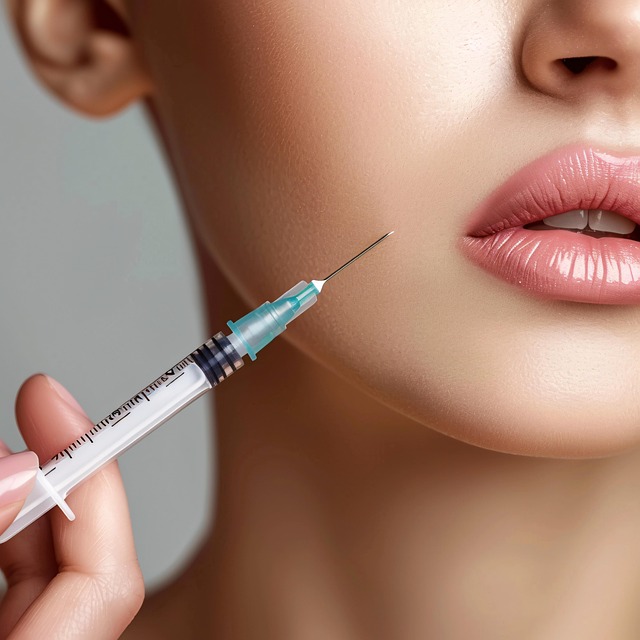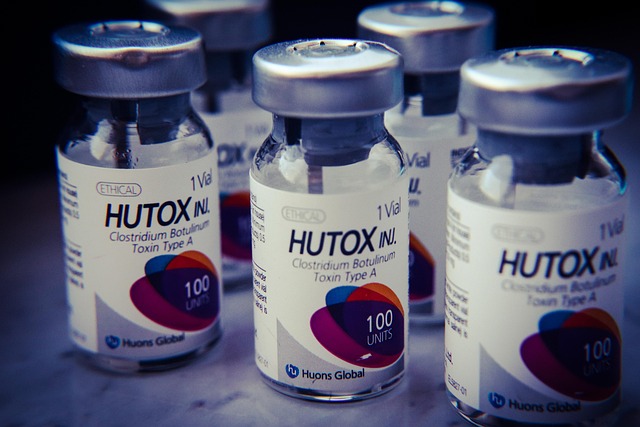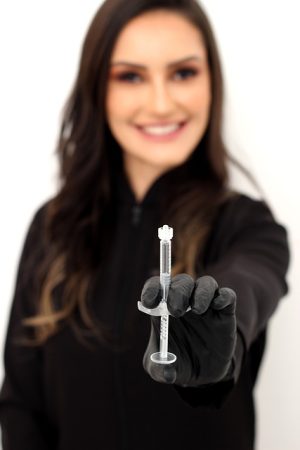This text compares Botox and dermal fillers as non-surgical treatments for fine lines, highlighting their distinct approaches. Botox, a muscle paralyzer, temporarily relaxes facial muscles to prevent expression lines (lasting 3-6 months). Dermal fillers instantly fill in lines by adding volume (results vary from 6 to 24 months). The choice depends on individual needs: Botox for subtle, preventative treatments; dermal fillers for more dramatic results and deeper wrinkles. Both have quick, same-day procedures with minimal discomfort. Botox users require regular maintenance, while dermal fillers may need touch-ups less frequently. A holistic skincare routine complements both, maximizing their effectiveness.
“As we age, our skin undergoes natural changes, leading to the appearance of fine lines and wrinkles. In recent years, Botox has emerged as a popular and effective solution for preventing and reducing these signs of aging. This article delves into the science behind Botox, its role in smoothening the skin’s texture, and how it compares to dermal fillers. We’ll explore the procedure, safety aspects, and long-term benefits, offering a comprehensive guide for anyone considering Botox for fine line prevention, with a focus on understanding Botox vs. dermal fillers.”
Understanding Fine Lines and Their Causes

Fine lines are a natural part of aging, but their appearance can be a source of concern for many. These delicate wrinkles often start to form around the eyes, mouth, and forehead due to various factors. Understanding what causes them is the first step towards effective prevention.
One of the primary culprits is repeated muscle movement, especially in facial areas. Every time we frown, smile, or make other expressions, these actions cause our skin to fold, leading to temporary lines that can eventually become permanent. Environmental factors, such as sun exposure and smoking, also play a significant role by breaking down collagen and elastin fibers, which are essential for skin elasticity and firmness. In the battle between Botox and dermal fillers for fine line prevention, Botox has proven effective by temporarily paralyzing muscles, reducing the frequency and depth of these expressions, thus preventing lines from forming or deepening.
The Role of Botox in Preventing Fine Lines

Botox has emerged as a popular choice for those seeking to prevent and reduce fine lines and wrinkles, offering a non-invasive alternative to surgical procedures. Its primary mechanism involves relaxing specific muscles that are responsible for causing dynamic wrinkle formation, particularly around the eyes, forehead, and mouth areas. By inhibiting these muscles, Botox can prevent or minimize the appearance of expression lines and crow’s feet.
Unlike dermal fillers, which add volume and plumpness to the skin, Botox focuses on muscle relaxation. This makes it an ideal solution for people who want to maintain a youthful complexion by preventing wrinkles from forming. The non-permanent nature of Botox means results can last for several months, providing a convenient and effective way to keep fine lines at bay.
How Botox Works to Smooth Skin

Botox, a protein derived from bacteria, has revolutionized skincare by offering a non-surgical solution for fine line and wrinkle reduction. Its mechanism of action involves blocking nerve signals that trigger muscle contractions, which over time cause skin creasing. By relaxing specific facial muscles, Botox creates a smoothing effect, making it an effective preventive measure for dynamic lines—lines formed by frequent facial expressions.
Unlike dermal fillers that add volume to the skin, Botox works from within by preventing the formation of wrinkles. This makes it a preferred choice for those seeking a subtle yet noticeable enhancement. The procedure is quick and relatively painless, ensuring patients can resume their daily activities immediately after. Additionally, Botox’s results are temporary, typically lasting 3-6 months, providing flexibility for regular treatments to maintain youthful-looking skin.
Botox vs Dermal Fillers: Key Differences

When considering treatments for fine line prevention, understanding the differences between Botox and dermal fillers is crucial. These two popular cosmetic procedures target different aspects of skin aging. Botox, a protein derived from bacteria, works by temporarily paralyzing muscle activity, reducing dynamic wrinkles caused by facial expressions. This results in smoother skin and a more youthful appearance, although the effects typically last 3-6 months.
On the other hand, dermal fillers are hyaluronic acid-based injections that add volume to the skin, smoothing out static wrinkles and enhancing facial contours. Unlike Botox, their effects can last for several years, making them a longer-term solution. The choice between the two depends on individual preferences and concerns, with Botox being ideal for preventing and reducing fine lines, while dermal fillers are more suitable for restoring volume loss and defining facial features.
Choosing the Right Treatment Option

When considering fine line prevention, it’s essential to understand the differences between popular treatments like Botox and dermal fillers. Both offer effective solutions for reducing the appearance of wrinkles, but they work in distinct ways. Botox, a neurotoxin, relaxes muscle activity, preventing contraction that causes dynamic lines. It’s ideal for expression lines around the eyes and mouth. On the other hand, dermal fillers boost volume by injecting a substance into the skin to fill in depressed areas, instantly smoothing out static wrinkles.
The choice between Botox vs dermal fillers depends on individual needs and goals. Botox is excellent for subtle, preventative treatments and maintaining youthful appearance over time. Dermal fillers, however, offer more dramatic results for deeper wrinkles or lost volume. Consulting with a dermatologist can help determine the best course of action based on skin type, severity of wrinkles, and desired outcome.
What to Expect During a Botox Procedure

During a Botox procedure, a small amount of botulinum toxin is injected into specific muscles responsible for causing fine lines and wrinkles. Unlike dermal fillers that plump up the skin, Botox works by temporarily paralyzing these muscles, which prevents them from contracting and forming wrinkles. The treatment is typically quick, usually taking around 15-30 minutes, and is often considered a same-day procedure. You may feel a brief pinch or stinging sensation during the injections, but many patients report minimal discomfort.
Unlike Botox, dermal fillers enhance the skin’s appearance by adding volume and smoothness to fine lines and wrinkles. While Botox focuses on preventing future wrinkling by relaxing muscles, dermal fillers immediately fill in existing lines and folds, providing a more youthful appearance. The effects of Botox last for several months, whereas dermal filler results can last anywhere from 6 to 24 months, depending on the type of filler used.
Safety and Side Effects Considerations

When considering Botox for fine line prevention, it’s crucial to balance its potential benefits with safety and side effects considerations. Unlike dermal fillers, which can add volume and enhance specific areas, Botox works by temporarily paralyzing muscles, reducing the appearance of wrinkles caused by repeated facial expressions. While generally safe when administered by a qualified professional, side effects may include temporary bruising, swelling, or headaches at the injection site. In rare cases, it can lead to more serious complications, such as muscle weakness or difficulty swallowing.
When choosing between Botox and dermal fillers for fine line prevention, understanding these differences is essential. Botox offers a non-invasive approach with results that last 3-6 months, making it ideal for subtle enhancements. Dermal fillers, on the other hand, provide immediate results with longer-lasting effects (up to 2 years), but carry a higher risk of side effects like asymmetry or an unnatural look. The choice depends on individual preferences, budget, and desired outcome, with both options presenting their unique advantages in the realm of anti-aging treatments.
Long-Term Results and Maintenance

When considering Botox for fine line prevention, understanding long-term results and maintenance is key. One of the primary advantages over dermal fillers is Botox’s ability to prevent lines from forming by relaxing facial muscles. While the effects of Botox typically last 3-6 months, regular treatments can significantly slow down the appearance of fine lines and wrinkles. In contrast, dermal fillers offer immediate results but may require more frequent injections to maintain their effect as they are not preventing muscle activity.
To maintain optimal results, consistent scheduling is essential. Patients often notice the most significant improvements when they stick to a regular Botox regimen. Additionally, combining Botox with other anti-aging treatments, like retinoids and sun protection, can further enhance the prevention of fine lines and promote healthy skin longevity.
Lifestyle Tips for Complementing Your Treatment

After your Botox or dermal filler treatment, maintaining healthy habits can enhance its results and prevent premature aging. Botox and dermal fillers offer temporary solutions to fine lines and wrinkles, but adopting a holistic approach will maximize their effectiveness. A balanced diet rich in antioxidants and essential nutrients supports skin health from the inside out. Staying hydrated by drinking plenty of water is crucial for maintaining skin’s elasticity and radiance.
In addition, regular exercise improves blood circulation, bringing vital oxygen and nutrients to the skin while promoting lymphatic drainage, which helps eliminate toxins. Protecting your skin from excessive sun exposure is also paramount; wear sunscreen daily, as UV rays accelerate aging. Avoiding smoking and excessive alcohol consumption further contributes to maintaining youthful-looking skin. These lifestyle choices complement your treatment, ensuring you achieve and preserve the best possible results.
